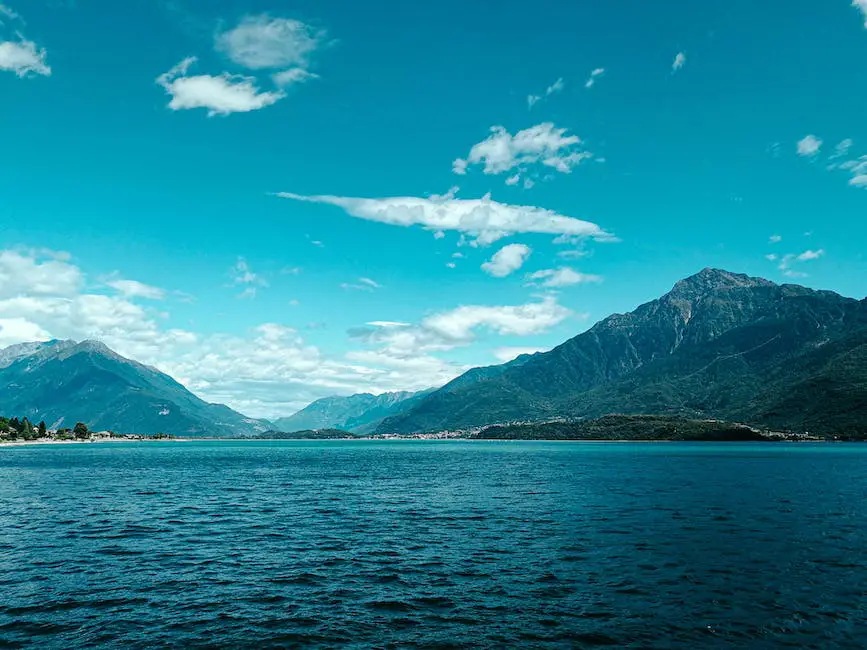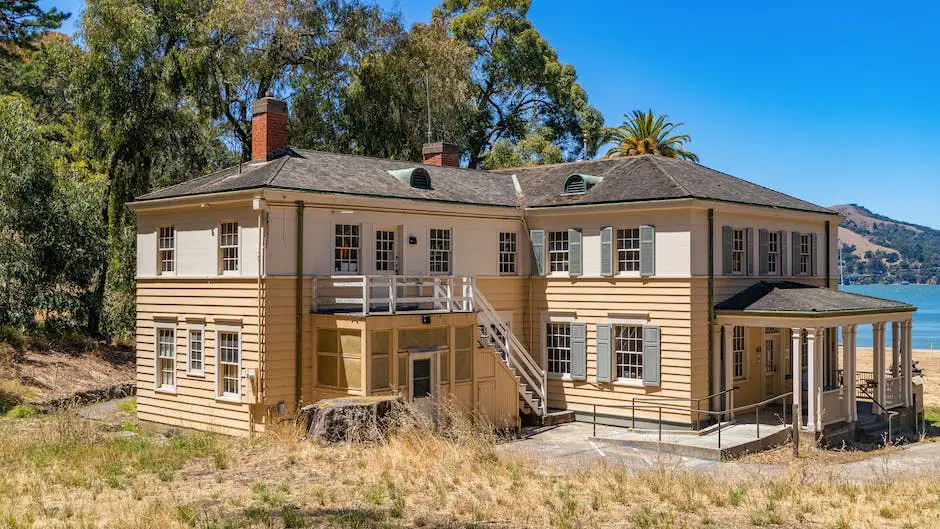Immerse yourself in the enchanting world of Torrey Pines State Natural Reserve, a natural haven with a rich history, diverse flora and fauna, and stunning landscapes. In this article, you’ll not only learn about the fascinating history and cultural significance of this unique site, but also get a glimpse of its breathtaking beauty and an insight into the exciting activities it offers.
History of Torrey Pines Reserve
Torrey Pines State Natural Reserve has a rich and fascinating history that dates back thousands of years to the time when it provided sustenance and resources for the Native American tribes, such as the Kumeyaay people. This Californian coastal ecosystem was recognized by the Europeans in the 16th century, when the Spanish explorer Juan Rodriguez Cabrillo first arrived in San Diego Bay. However, it wasn’t until the mid-19th century, under the naturalist Dr. Charles Christopher Parry, that this reserve truly gained the prominence it has today. Dr. Parry named the iconic Torrey Pine tree in honor of his colleague Dr. John Torrey, a leading American botanist at the time.
The unique Torrey Pine tree, which has survived in this region since the Ice Age, is a critically endangered species and a primary reason for the establishment of this protected reserve. The relict stand of Pinus torreyana on the reserve is one of the only two remaining populations of this rare pine tree in the world. As a result, conservation efforts have been focused on protecting this delicate habitat, preserving its biodiversity, and maintaining the ecological balance that allows these ancient trees to continue to thrive.
The awe-inspiring landscape and sandstone formations of Torrey Pines State Natural Reserve offer not only stunning views of the Pacific coastline, but also provide a glimpse into the region’s geological past. Serving as a significant source of scientific research, the reserve’s flora, fauna, and various natural and cultural resources have been extensively studied. A visit to Torrey Pines State Natural Reserve allows enthusiasts and hobbyists alike to immerse themselves in the area’s rich history, cultural heritage, and ecological importance, resulting in an unforgettable experience.

Flora and Fauna
Located along the coastal region of San Diego, California, Torrey Pines State Natural Reserve is home to an impressive array of flora and fauna. The reserve’s unique location supports numerous endemic and endangered species across diverse habitats. It is best known for the Torrey Pine (Pinus torreyana), the rarest pine species in the United States, which can only be found within the reserve and on Santa Rosa Island. Moreover, the park’s landscape nurtures various plant communities, including chaparral, coastal sage scrub, and southern maritime chaparral. These diverse habitats provide food and shelter for the abundant wildlife that thrives in the area, making the reserve a must-visit destination for nature lovers.
The reserve is not only a sanctuary for its distinctive plant life, but it is also a haven for a wide variety of wildlife, including mammals, reptiles, and birds. Some of the common animals found in the park are the California ground squirrel, brush rabbit, coyote, and desert cottontail. The reserve is also home to several rare or endangered species such as the California gnatcatcher, least Bell’s vireo, and the San Diego horned lizard. Many migratory and endemic bird species also inhabit the reserve, including the red-tailed hawk, scrub jay, wrentit, and the peregrine falcon, the fastest bird known to man.
Torrey Pines State Natural Reserve, a breathtaking destination situated in San Diego, California, invites visitors to explore its numerous scenic offerings and appreciate the richness and diversity of its flora and fauna. The reserve’s maritime chaparral and coastal sage scrub habitats are essential in conserving bio-regions and providing crucial refuge for wildlife unable to survive in the surrounding urban development.

Geology and Landscape
Endemic Species and Preservation
These habitats, along with the awe-inspiring Torrey Pines, offer insight into California’s endemic species and are a testament to the importance of preserving ecosystems for future generations. The diverse and striking landscape of the reserve draws in numerous outdoor enthusiasts and hobbyists, eager to become skilled in understanding and appreciating this natural wonder.
The Noteworthy Geology Of The Reserve
At its heart lies the region’s noteworthy geology, which is largely characterized by the stunning sandstone cliffs that stand tall above the expansive shoreline. These cliffs, shaped by millions of years of geological forces, offer visitors an opportunity to observe the multitude of sedimentary layers and eroded canyons within the park’s 2,000-acre territory.
Distinct Ecological Features
The Reserve is crisscrossed by numerous trails that showcase the distinct ecological features of this area, including the rare Torrey Pine tree and the coastal sage scrub habitat.
The Beach Access
A particularly captivating aspect of the Reserve’s geology is the beach access, where visitors can marvel at the unmistakable meeting point between land and sea.
The Del Mar Formation
At Torrey Pines State Natural Reserve, located near San Diego, California, one of the most intriguing geological features is the Del Mar Formation. This sedimentary formation, dating back to the Eocene epoch about 50 million years ago, provides invaluable insight into the area’s prehistoric marine environment. It further accentuates the Reserve’s role as a living museum of natural history, adding to its charm and allure.

Hiking Trails
Exploring Torrey Pines State Natural Reserve
Torrey Pines State Natural Reserve offers a wide array of hiking trails to suit various fitness levels and interests, allowing enthusiasts and hobbyists to explore the beautiful region and become better acquainted with its unique features, including the rare Torrey Pine trees and fascinating geological formations like the Del Mar Formation.
One of the most popular trails is the Guy Fleming Trail, a loop of roughly two-thirds of a mile that boasts stunning views of the coastline and, depending on the season, vividly colorful wildflowers. This relatively easy trek is perfect for all ages and fitness levels and offers the chance to observe the natural wonders that make the Reserve so special.
The Broken Hill Trail
For the more experienced hiker seeking a slightly steeper climb, the Broken Hill Trail is a must-try. This 2.5-mile round-trip hike can be accessed via both the north and south trailheads, and winds through varied terrain, providing breathtaking views of the Pacific Ocean and peeks of the twisting Penasquitos Lagoon. Along the trail, visitors may also catch glimpses of mule deer, bobcats, and the occasional red-tailed hawk soaring overhead.
The Razor Point Trail
For hiking enthusiasts and hobbyists looking to become skilled in exploring the Torrey Pines State Natural Reserve, the Razor Point Trail is a great place to start. This moderately difficult, 1.3-mile round trip offers incredible ocean vistas and takes hikers through the unique, eroded badlands known as the Yucca Point Overlook. As you trek along this diverse ecosystem, you will encounter numerous native plant species such as coastal sage scrub, maritime chaparral, and the picturesque lemonadeberry bush, making it a perfect trail for nature lovers and photography enthusiasts alike.

Visitor Information
Before heading out to the Torrey Pines State Natural Reserve, it’s essential to plan your visit, taking into consideration parking and public transportation options for a hassle-free experience. The Reserve offers limited parking spaces within its boundaries, including the North Beach Lot at the base of the Reserve and the South Beach Lot further south along the beach. Parking fees range from $10 to $25, depending on the time of year and day of the week. Alternatively, there are public transportation options available, with the nearest bus stop located at the intersection of North Torrey Pines Road and Carmel Valley Road. From this stop, visitors can walk approximately 1.5 miles to the entrance of the Reserve.
The Visitor Center at Torrey Pines State Natural Reserve, known as the Lodge, plays a vital role in enhancing the visitor experience. The Lodge houses exhibits and displays about the natural and cultural history of the area, as well as a small gift shop featuring books, souvenirs, and educational materials. Volunteer docents are available at the Visitor Center to provide guided walks and interpretive talks to help guests better understand and appreciate the Reserve’s unique flora, fauna, geology, and Native American history.
As an enthusiast or hobbyist looking to become skilled in Torrey Pines State Natural Reserve, it is important to recognize that maintaining the ecological integrity of the Reserve is a top priority for all visitors. This extraordinary location is home to several rare and endangered plant species, including the nation’s rarest pine tree, the Torrey Pine. To protect this precious ecosystem, visitors are required to stay on designated trails and refrain from smoking, littering, or picking plants. Dogs and other pets are not allowed within the boundaries of the Reserve to prevent potential disturbances to the wildlife. By adhering to these guidelines, visitors contribute to the preservation and conservation of Torrey Pines State Natural Reserve for future generations to enjoy.

Conservation and Education Programs
Located in San Diego, California, Torrey Pines State Natural Reserve is renowned for its efforts to preserve and protect the rare Torrey pine tree as well as the diverse ecosystem present within the 2,000-acre park. Ongoing conservation efforts include the restoration of native habitats, removal of invasive plant species, and maintaining the overall health of the park’s natural resources. A variety of organizations have partnered with the reserve to achieve these conservation goals, such as the Torrey Pines Association, California State Parks Foundation, California Native Plant Society, and other committed groups. Developing a deeper understanding of the reserve’s significance, both ecologically and historically, is crucial to truly appreciate the uniqueness and beauty of Torrey Pines State Natural Reserve.
Volunteerism and Educational Programs
One of the key ways Torrey Pines State Natural Reserve promotes long-term conservation is through its strong emphasis on volunteerism and educational programs designed to engage the public. Their extensive volunteer program, which is made up of around 260 dedicated volunteers, offers many opportunities for enthusiasts or hobbyists to get involved in the preservation process through trail maintenance, habitat restoration, and assisting park staff with visitor services. In addition to the volunteer work, the reserve also offers a variety of educational programs that focus on the natural history, ecology, and native plant life of the park. Guided nature walks, which are led by experienced volunteers, are available daily, offering visitors an opportunity to learn about the unique flora, fauna, and geological features found within the park.
Environmental Education
Torrey Pines State Natural Reserve also places significant importance on fostering environmental education among younger generations. They offer a Junior Rangers Program for children ages 7-12, which inspires participants to become stewards of the park through interactive, hands-on activities. Additionally, the reserve hosts field trips and educational workshops for school groups, educators, and community organizations, aiming to promote a greater understanding of the park’s unique natural resources and the role of conservation in preserving these invaluable areas for future generations to enjoy. By engaging with individuals of all ages and backgrounds, Torrey Pines State Natural Reserve fosters a sense of responsibility and appreciation for the natural world that is so vital to its conservation success.

Throughout this article, we’ve guided you on a journey through the vivid tapestry of nature, history, and culture that defines the Torrey Pines State Natural Reserve. Whether you’re an avid hiker, a nature enthusiast, or simply seeking an unforgettable experience, Torrey Pines offers a wealth of opportunities to satisfy your curiosity and connect with the natural world. Remember to leave no trace and help preserve this incredible place for future generations to enjoy, as we continue to learn from and appreciate the wonders of Torrey Pines State Natural Reserve.
